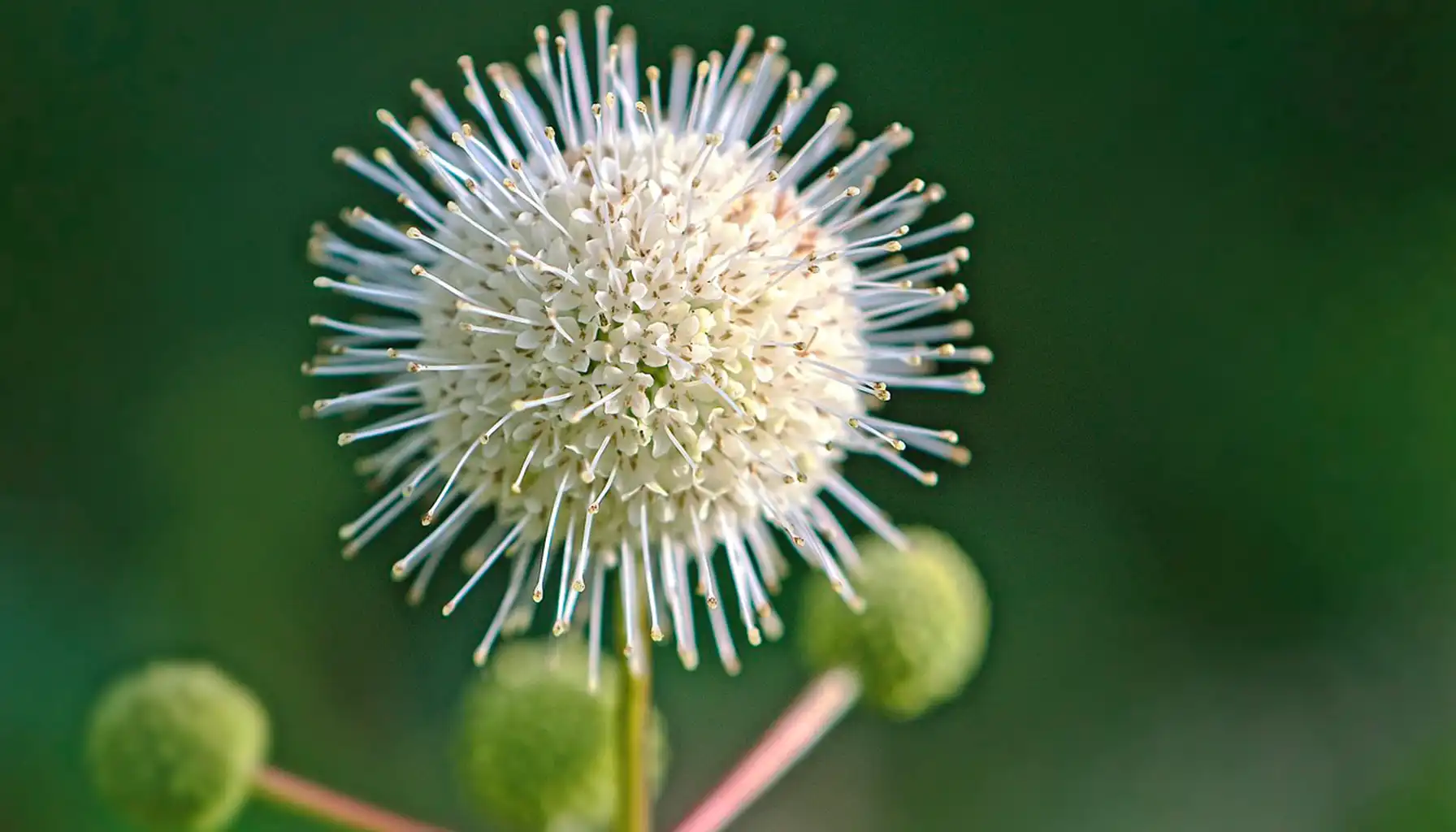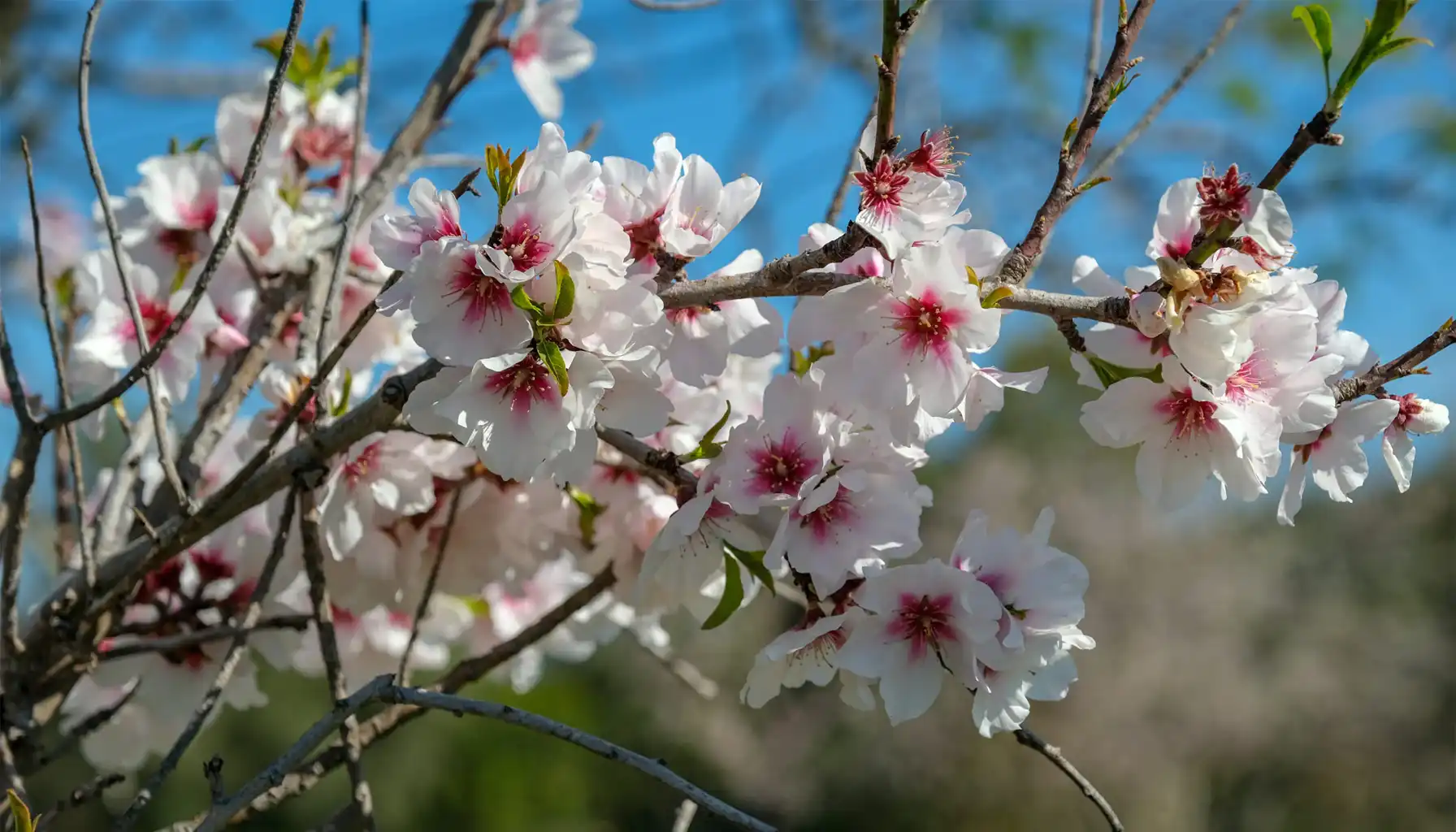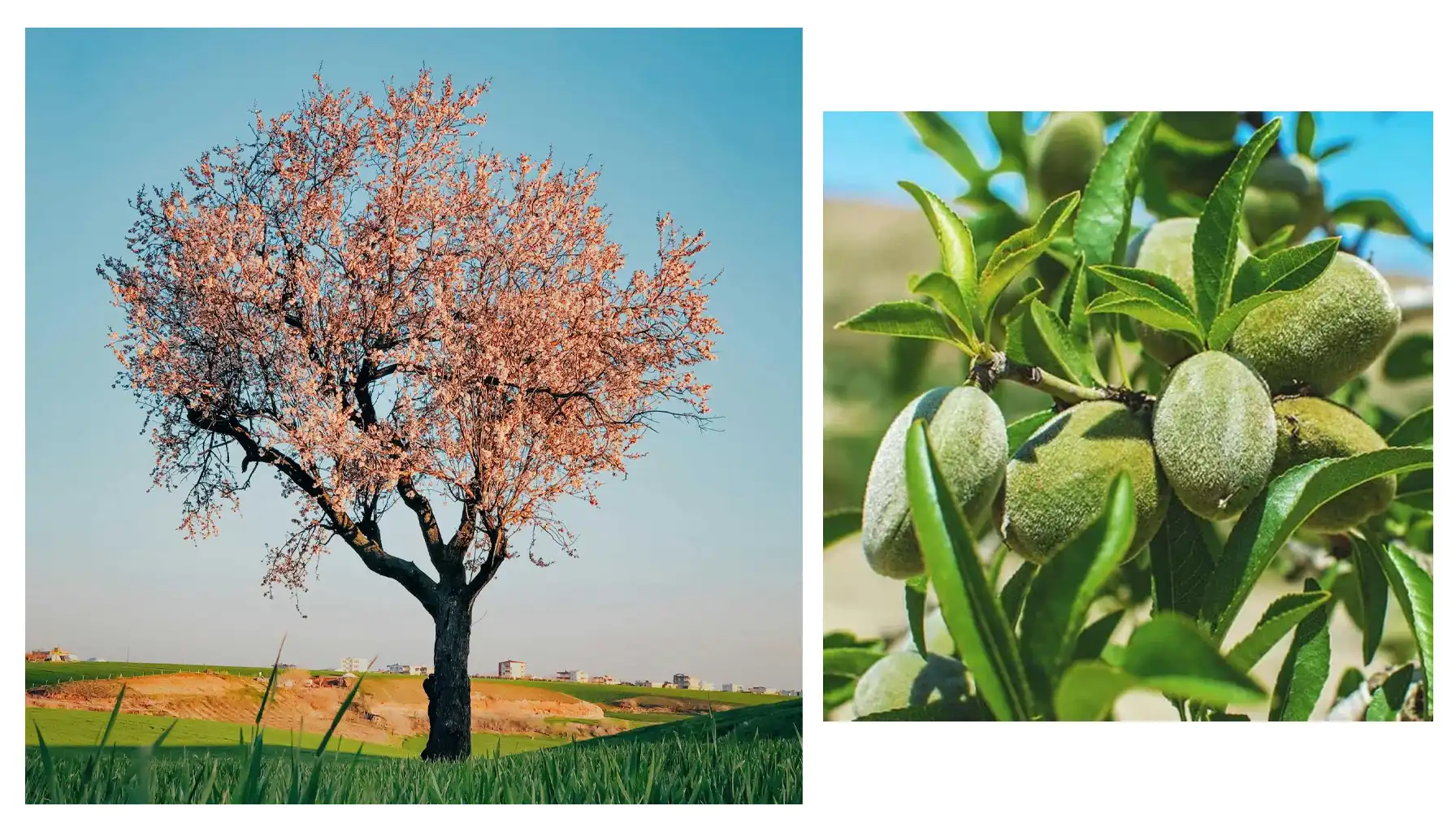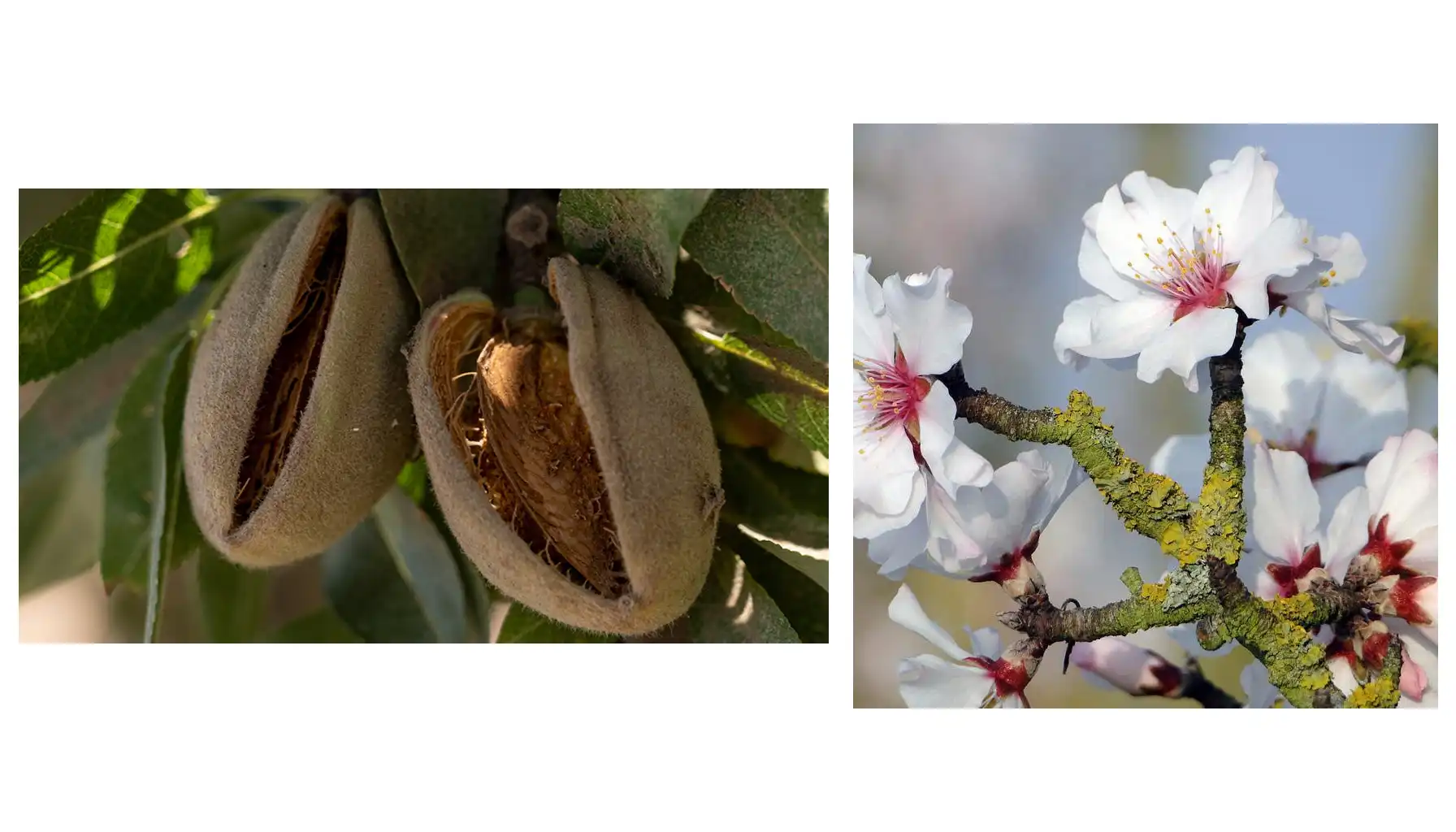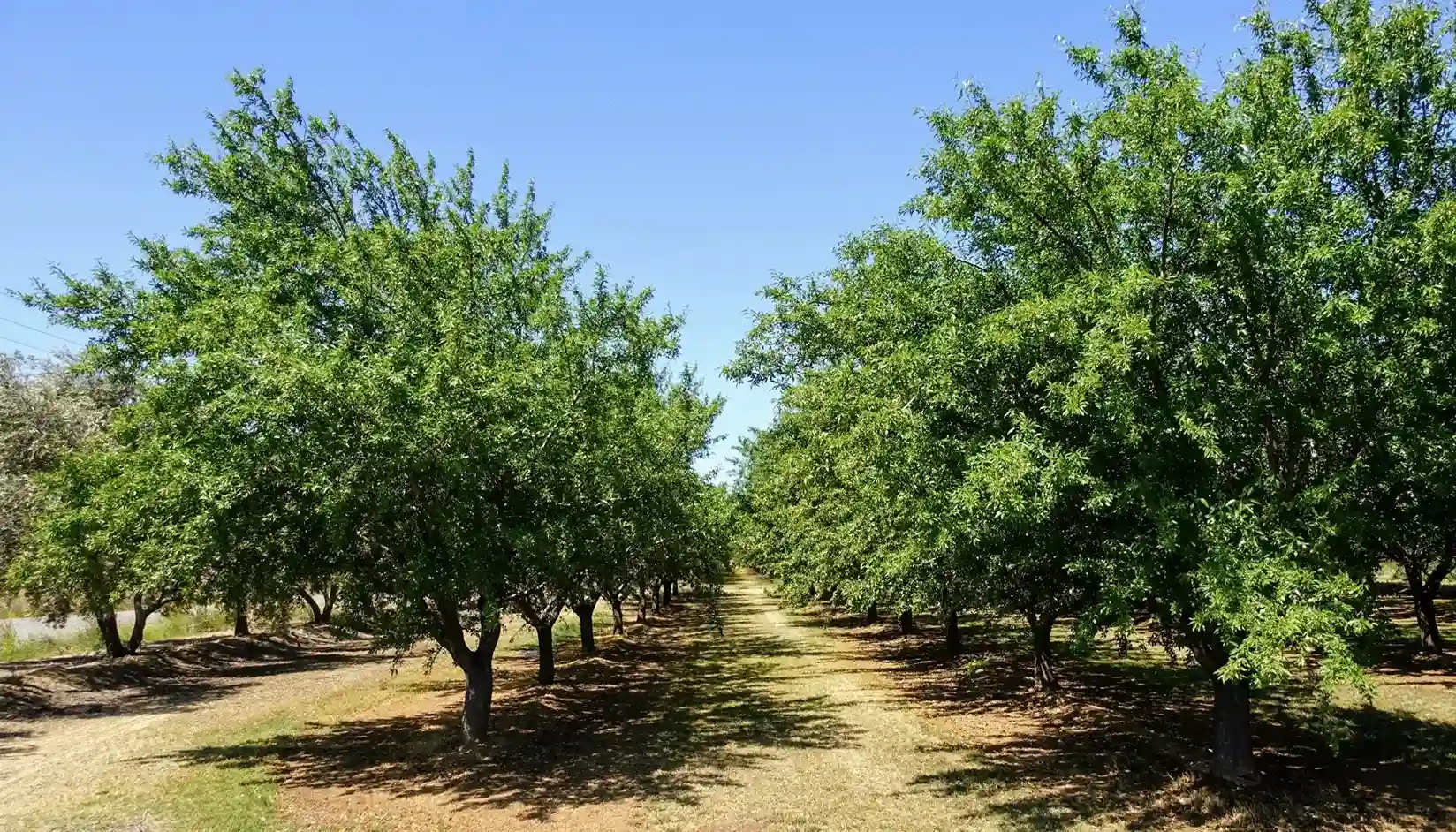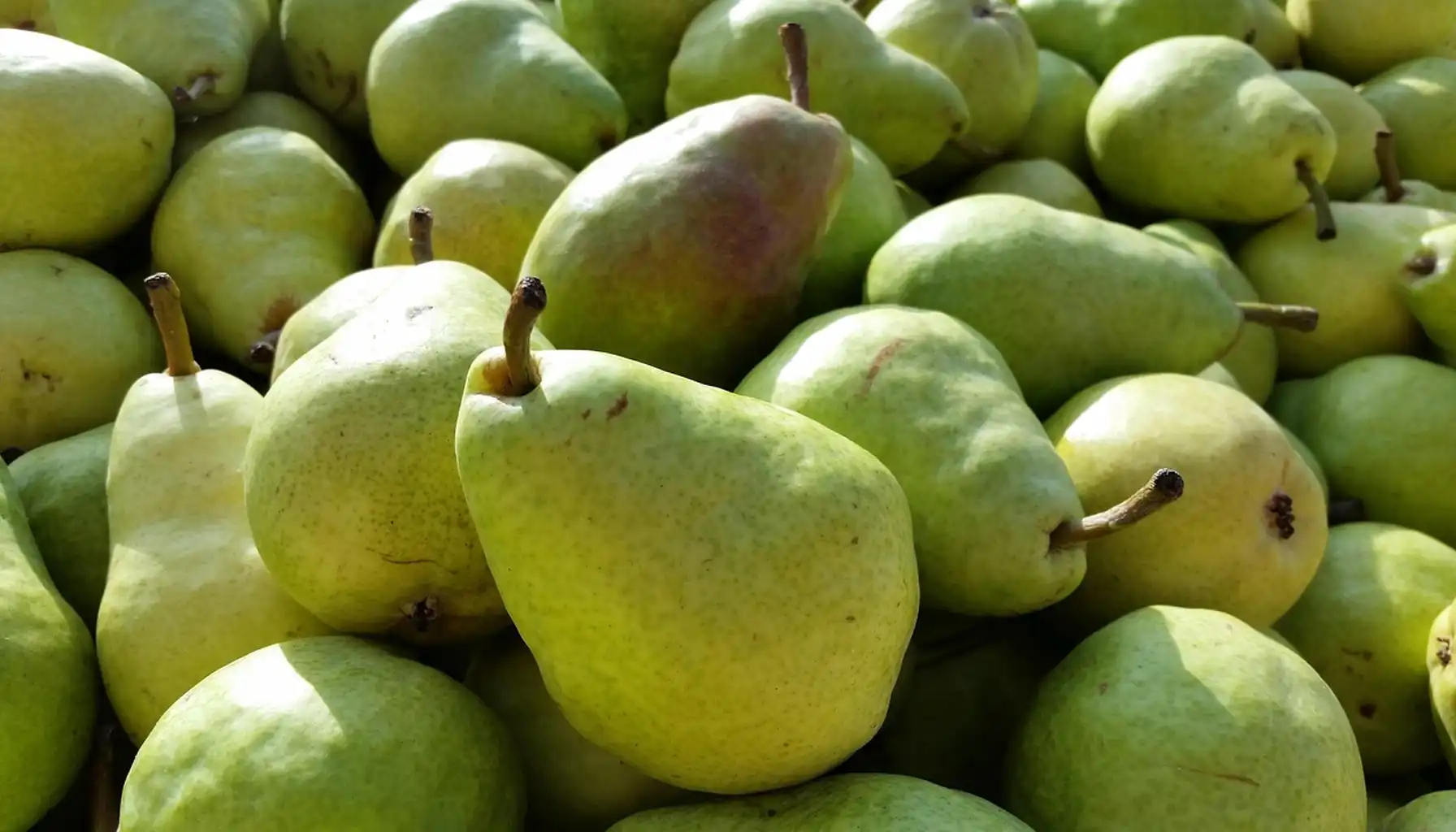.Who doesn't like almonds? They're milky, nutritious, rich, and can make any dish stand out. No wonder many people would like to grow full trees and eat almonds daily.
How much water do Almond trees need? This article will answer your questions about plant care and much more. You will learn about the varieties of this tree and how to make it bloom.
Have you heard about a free plant identifier? This app can recognize all kinds of plant life for you.
What are Almond Trees
Almond trees (scientifically named Prunus dulcis) are small to medium-sized trees best known for producing almonds. Almonds are more than a treat. Technically, they are seeds inside the tree’s fruit.
They belong to the same genus as peaches, cherries, and plums, which is why almond blossoms look quite similar to the aforementioned trees. It’s also related to roses.
Almond Blossom Trees Overview |
Feature | Details |
Origin | Central and Southwest Asia, particularly Iran and the surrounding countries |
Type | Deciduous fruit/nut-bearing tree |
Size | Typically 4–10 m (13–33 ft) tall, with a spread of 4–6 m (13–20 ft) |
Life span | Productive for about 25–30 years. Can live up to ~50 years in favorable conditions |
Leaf Colors | Green during the growing season. Turns yellow in autumn before leaf drop |
Flowers | White to pale pink, five-petaled |
Propagation | By seeds and grafting |
Toxicity | Sweet almonds are safe. Bitter almonds are toxic |
Special Features | Blooms early |
Types Of Almond Trees
It’s very often that plants have many varieties and types, but usually these types are sorted according to beauty and colour. Just look at Coleus and its many colourful varieties.
But what about the types of this tree? It’s not about what do Almond trees look like. Yes, different varieties look a bit different, but usually, Almond trees are categorized according to their taste.
Sweet Almonds (Prunus dulcis var. dulcis)
The more popular variety, and for the right reasons. After all, those are the trees that give us almonds. Cultivated in large quantities. Often, if you ask a farmer how many Almond trees per acre they grow, you’ll find more than a hundred trees. Of course, big cultivation created extra varieties.
Sweet almonds are further divided into:
Nonpareil: most widely grown in California. The nuts are always of excellent quality and have a mild flavor.
Mission: A variety with harder nuts. Rich, strong flavor, often roasted.
Carmel: A versatile variety, used for roasting or confectionery. Gives nuts earlier compared to most.
Bitter Almonds (Prunus dulcis var. amara)
Bitter almonds are dangerous and, therefore, inedible. They contain amygdalin, which releases cyanide when eaten raw.
Telling the sweet variety from the bitter by looks is almost impossible, but don’t worry. There’s no chance that you’re ever going to buy deadly bitter almonds accidentally. They are not sold for direct consumption. Plus, it’s grown much less commonly.
Instead used after processing to make almond oil, almond extract, and in some traditional medicines. Even this toxic variety has beauty and usage.
Tips for Growing Almond Trees
Usually, we think of trees as something hardy. Most trees, like Mulberry, Oak, and Pines, are quite hardy. Almond trees need slightly more care, but they are definitely manageable.
Water Requirements
It’s enough to water this tree every 1–2 weeks during the growing season, especially in spring and summer while nuts develop.
Do Almond trees need a lot of water? While this plant can survive droughts, it needs water to create more, better-quality nuts. So shortly, they don’t need much water, but grow better.
Fertilizer Requirements
Fertilize this tree in early spring after buds break. Use balanced fertilizer, as these trees respond well to nitrogen, phosphorus, and potassium.
Light Requirements
This tree needs full sun for at least 6–8 hours daily. It originated from places like Iran, a hot, sunny region full of sun-loving plants like Palm trees.
Beware of low-light spots. This plant has a bad time in shady places. Low light causes weak, leggy growth, and this kind of flora gets very weak in low light.
Temperature Requirements
Where do Almond trees grow zones? If you don't know, the growth zone (sometimes called hardiness) shows preferred temperature regions for the plant. Almond trees grow zones are 5-7 to 9, depending on the variety. The ones grown in California are typically 5 to 7, while in other countries, they might be 9.
The optimal temperature for this plant is between 15 and 30 °C (59 and 86 °F). When colder temperatures hit in the winter, they go dormant, but wake up once spring comes.
Soil Requirements
Use a well-draining cactus or succulent mix. Drainage is essential; otherwise, the roots may start rotting.
Almond Trees Blooming
It’s no wonder a lot of people want to see Almond trees in bloom. After all, they are related to peaches and cherries, and thousands of people come together every day to look at how peaches and cherries bloom.
When do almond trees bloom? Almonds are among the earliest fruit trees to bloom each year. In Mediterranean climates, blossoms usually appear from late January to early March. The exact time depends on variety, weather, and location.
Flowers are white to pale pink, five-petaled, and about 2.5–5 cm (1–2 inches) wide. The flowers attract pollinators, mainly bees, to help in procreation.
Almond Propagation
Seeds are how most trees multiply: Norfolk Pine, Oak, Apple tree, etc. Unfortunately, seeds take a lot of time to grow, and commercial trees (like Almonds) are typically propagated by a process called grafting.
Grafting is a process where you take a part of the parent tree and attach it to another, different tree. Grafted trees produce nuts sooner (3–4 years) compared to seed-grown species (up to 8 years).
Choosing Rootstock. Rootstock is the grafting partner. You should attach an Almond tree’s branch to this other tree. Usually, peaches are used for rootstock. They are similar, help withstand drought, and boost resilience.
Combine the barks. The most common grafting method is T-Budding. It’s done in late summer when bark slips easily. A T-shaped cut is made in the rootstock bark, and a single bud from the Almond tree is inserted. You should secure the bud with grafting tape or rubber strips.
Bud remains dormant until the following spring, when growth begins. With time, it will grow from the peach’s base and begin giving nuts.
Environmental Impact
Flora is precious, natural for our planet. Almonds support pollinators and store CO2.
Unfortunately, with unsustainable framing practices, the ecology gets ruined. And some Almonds are grown in a way that is bad for our planet.
High Water Demand:
Almonds are water-intensive. Producing 1 kernel can require about 1 gallon (4 liters) of water.
In drought-prone regions (like California’s Central Valley), large-scale almond farming can stress water supplies.
Pollinator Stress:
Almond bloom requires billions of honeybees.
Commercial pollination can overwork bees, spread diseases among hives, and cause high bee mortality if pesticides are misused.
Pesticide & Fertilizer Use:
Habitat Conversion:
Out of all farming sectors, California farms are usually mentioned as being detrimental. Are almond trees bad for the environment? No, the tree is a beautiful part of our planet. Blame the overconsumption, not the flora.
Almond Tree Benefits
There’s more to these trees than giving you tasty nuts. If you keep one in your orchard or inside as a bonsai tree, many positive changes will come in your life.
Category | Benefits |
Nutritional & Health | The nuts are high in protein, healthy fats, fiber, vitamin E, magnesium, and calcium. Nuts are known for their antioxidant properties and help with staying fit. |
Environmental & Agricultural | Early food source for pollinators, so it will bring more bees to your garden. Stores carbon in wood and soil. It improves soil fertility through leaf litter and pruned material. |
Cultural & Aesthetic | The blossoms are beautiful and bring high ornamental value. |
AI Plant Finder
AI Plant Finder is a free, flora identification app designed for both casual plant enthusiasts and experienced gardeners. It offers real-time identification, care advice, and tools to help you nurture your plants effectively.
Two main attractions for this app are plant and disease recognition.
Snap a photo of any plant, and the app uses advanced AI to identify it, providing the species name, care requirements, and growing tips.
The app can analyze images to detect signs of diseases or pests, offering treatment suggestions to help your plants recover.
Ready to take your gardening skills to a new height? Download the AI Plant Finder on iOS and Android devices.
Related AI Plant Finder Posts
